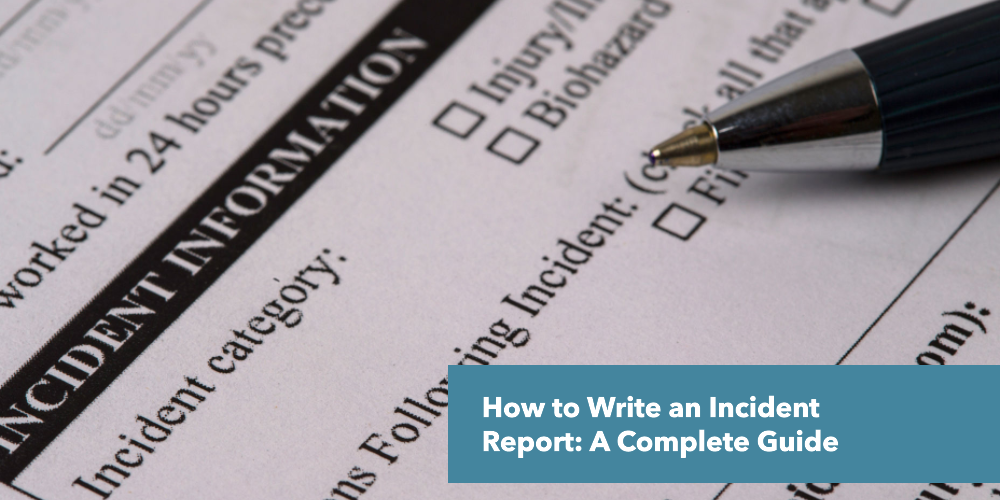To write an incident report, start with document factual details (date, time, location, people involved), describe the incident objectively, list actions taken, include witness statements (if any), and submit it promptly (ideally within 24 hours). Use clear, concise language and avoid opinions.
Step-by-Step Guide:
Gather Immediate Information
Date/Time: Exact timestamp (e.g., “March 15, 2024, 10:15 AM”).
Location: Specific area (e.g., “Warehouse B, Aisle 3”).
People Involved: Names, roles, and contact details.
Describe the Incident
What Happened: State facts (e.g., “Employee slipped on a wet floor”).
Cause: Identify the root cause if known (e.g., “Unmarked spill”).
Impact: Note injuries, damages, or delays (e.g., “Sprained ankle; work halted for 30 minutes”).
Document Actions Taken
List immediate responses (e.g., “First aid applied,” “Area cordoned off”).
Include Witness Accounts
Add quotes or summaries from witnesses (e.g., “John Doe stated, ‘I saw the spill 10 minutes before the slip’”).
What is the Purpose of the incident Reporting?
The purpose of incident reporting is to document workplace incidents for legal compliance, prevent future occurrences, analyze root causes, and ensure accountability. It also protects employees by addressing hazards (e.g., OSHA recorded 2.8 million nonfatal workplace injuries in 2022).
Explanation:
Incident reports serve as a formal record to keep workplaces safe and efficient. When you report an incident, you:
Meet Legal Requirements: Many industries require incident documentation by law (e.g., OSHA mandates reporting severe injuries within 8 hours). Failing to comply risks fines or legal action.
Prevent Recurrence: By identifying patterns (e.g., 30% of slips occur in unmarked wet areas), you help organizations fix hazards like spills or faulty equipment.
Support Investigations: Reports provide factual evidence for insurance claims, lawsuits, or internal reviews, reducing disputes over liability.
Improve Safety Culture: Tracking incidents encourages proactive risk assessments and training updates (e.g., adding spill cleanup protocols).
Ensure Accountability: Clear documentation holds individuals or systems responsible, ensuring corrective actions (e.g., disciplinary steps or process changes) are tracked.
Use standardized tools (e.g., OSHA Form 301) to streamline reporting and ensure critical details aren’t overlooked.
What are the Types of the Incident Report?
The primary types of incident reports are Workplace Accidents, Near Misses, Security Breaches, Environmental Incidents, and Equipment Failures.
Workplace Accidents
You’ll use these when someone gets hurt like a burn from machinery or a fall. For example, in 2022 alone, OSHA recorded over 2.6 million nonfatal workplace injuries. These reports aren’t just paperwork; they’re your shield against repeat incidents and legal headaches.
Near Misses
Think of these as “close calls” say, a ladder tipping over but nobody getting hit. Reporting these might feel unnecessary, but they’re gold for spotting risks early. Roughly 60% of companies tweak their safety rules because of near-miss data.
Security Breaches
Picture a hacker accessing customer data or an employee losing a company laptop. You’d file this type to meet laws like HIPAA (healthcare) or GDPR (Europe). Skip it, and fines can hit millions, not to mention shattered trust.
Environmental Spills
Imagine a chemical leak or oil seeping into a drain. Even small spills matter, the EPA requires reports for just 1 gallon of hazardous material. These docs keep regulators off your back and ecosystems intact.
Equipment Failures
That broken conveyor belt halting production? Document it. Downtime from gear failures costs U.S. industries $50 billion yearly. Reports here help you lobby for better maintenance budgets or smarter tech upgrades.
Pro Tip: Match the report type to your industry. Hospitals lean on HIPAA breach forms, while factories swear by OSHA’s templates. Keep it plain, skip the jargon, and focus on what happened not who to blame.
What to Include in an Incident Report?
Include date/time, location, names of involved parties, description of the incident, actions taken, witness statements, and supporting evidence (photos, logs). Submit within 24 hours for compliance (e.g., OSHA deadlines).
Date/Time & Location
Pinpoint exactly when and where it happened (e.g., “July 10, 2024, 2:30 PM; Loading Dock 2”). Without this, investigations stall or lack credibility.
People Involved
List everyone affected names, job roles, contact info. If a worker sprained their ankle, note their supervisor too. Missing details risk incomplete accountability.
Incident Description
Stick to facts: “Forklift collided with shelving due to wet floors.” Avoid blame (“careless driving”) save opinions for later reviews.
Immediate Actions
Did you administer first aid? Shut down equipment? For example, “Applied ice pack, reported to safety officer.” This shows you mitigated risks fast.
Witness Accounts
Quotes add weight. “Jane Doe said, ‘I saw the floor wasn’t marked.’” Witnesses back your version if disputes arise.
Evidence
Attach photos of hazards, security footage timestamps, or maintenance logs. A blurry spill photo beats a vague “slippery floor” claim.
What are the Benefits of the Incident Report?
The benefits of incident reports are including legal compliance, preventing future incidents, improving safety culture, ensuring accountability, and supporting data-driven decisions.
Benefits of the incident Report
Legal Compliance
When you document incidents, you avoid fines (e.g., OSHA penalties average $15,625 per violation). Reports prove you followed laws like HIPAA or EPA guidelines, shielding you from lawsuits or audits.
Preventing Future Incidents
Spotting patterns like 30% of injuries occurring in the same warehouse aisle lets you fix hazards. For example, adding non-slip mats after a slip report reduces repeat accidents.
Improving Safety Culture
Consistent reporting shows employees, you take risks seriously. Companies with strong reporting systems see 40% fewer incidents over time because staff proactively flag issues.
Ensuring Accountability
Reports clarify who or what caused an incident (e.g., faulty equipment logs or untrained staff). This drives corrective actions, like retraining or updating maintenance schedules.
Supporting Data-Driven Decisions
Hard numbers of guide policies. If *60% of near misses involve outdated tools*, you’ll prioritize upgrades. Data also justifies safety budgets to leadership.

